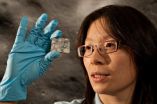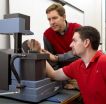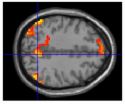John Pilley and Alliston Reid answered two central questions with their research: How large can a dog's vocabulary become if given extensive training? What do dogs actually understand when we use human language to communicate with them? These findings are published in the Elsevier journal Behavioural Processes .
The authors demonstrated that their dog, Chaser, learned the names of 1022 objects - no upper limit is apparent - they stopped training the dog after three years due to their time constraints, not because the dog could not learn more names. This study demonstrates Chaser's ability to learn the names of proper nouns, and her extensive vocabulary was tested repeatedly under carefully controlled conditions. The authors admitted that she remembered the names of each of her 1022 toys better than they could. Chaser's ability to learn and remember more than 1000 proper nouns, each mapped to a unique object, revealed clear evidence of several capacities necessary for learning receptive human language: the ability to discriminate between 1022 different sounds representing names of objects, the ability to discriminate many objects visually, an extensive vocabulary, and a substantial memory system that allowed the mapping of many auditory stimuli to many visual stimuli.
Their second experiment demonstrated that Chaser really understands that these are names, and not commands to fetch the object. In order to test independence of meaning of nouns and commands, the authors randomly combined nouns with commands to see if Chaser would produce the correct behavior toward the correct object in each trial. Without special training, Chaser responded to each combination correctly, even on the first trial, demonstrating that Chaser understood that the commands and proper-noun names had independent meanings. The dog understands that names refer to particular objects, independent of the action requested involving that object.
Their third experiment demonstrated that the dog also understands names for categories of objects or common nouns, and not just individual names or proper nouns. For instance, she learned that name "toy" referred to the 1022 objects she was allowed to play with, each with a proper-noun name. By forming categories represented by common nouns, Chaser mapped one label onto many objects. Chaser also demonstrated that she could map up to three labels onto the same object without error. For example, Chaser knew the proper-noun names of all objects used in the research. Chaser also mapped the common noun "toy" onto these same objects. Her additional success with the two common nouns "ball" and "frisbee" demonstrates that she mapped a third label onto these objects. Her demonstrations of one-to-many and many-to-one noun/object mappings reveal flexibility in the referential nature of words in border collies.
Each of these experiments showed that the dog could learn names using procedures involving associative learning. Their fourth experiment demonstrated that Chaser could also learn names by exclusion - inferred the name of a novel object by exclusion of familiar already-named objects. Retention of these names using this procedure was limited to short periods, however, just as usually observed with children.
According to Alliston Reid, "This research is important because it demonstrates that dogs, like children, can develop extensive vocabularies and understand that certain words represent individual objects and other words represent categories of objects, independent in meaning of what one is asked to do with those objects."
Additional research is needed to determine whether these impressive language abilities are shared by other breeds of dogs. This work encourages research into how the historical relationships between humans and dogs may have influenced the abilities of dogs to communicate with humans, and whether this influence is unique to dogs.
###
"Border collie comprehends object names as verbal referents" by John Pilley and Alliston Reid. http://dx.doi.org/10.1016/j.beproc.2010.11.007
About the authors
John W. Pilley, Ph.D. is a retired professor of psychology at Wofford College in Spartanburg, SC, where this study was completed.
Alliston K. Reid, Ph.D. is Reeves Family Professor of Psychology at Wofford College in Spartanburg, SC, and currently serves as president of the Society for the Quantitative Analyses of Behavior.
About Behavioural Processes
Behavioural Processes is dedicated to the publication of high-quality original research on animal behaviour from any theoretical perspective. It welcomes contributions that consider animal behaviour, from behavioural analytic, cognitive, ethological, ecological and evolutionary points of view. This list is not intended to be exhaustive, and papers that integrate theory and methodology across disciplines are particularly welcome. The quality of research and focus on these aspects are the sole criteria for acceptance. Papers reporting solely on human behaviour may be considered for publication if they relate closely to non-human research within the journal's remit. Authors of papers reporting research on human subjects are invited to contact the editors for advice prior to submission, as they are for papers of all kinds.
Behavioural Processes publishes three categories of paper. First, regular Research Reports present the results of original experiments or outline novel theoretical positions. Second, invited, critical Mini-Reviews are polemical reviews of an area of animal behavioral research accompanied by a number of responses by peers in the area. Though these reviews are invited, prospective authors are encouraged to contact the editors with their ideas for such papers. Third, Rapid Reports are short communications reporting the outcome of a single experiment in no more than 2000 words and a total of two tables or figures.
About Elsevier
Elsevier is a world-leading publisher of scientific, technical and medical information products and services. The company works in partnership with the global science and health communities to publish more than 2,000 journals, including The Lancet and Cell, and close to 20,000 book titles, including major reference works from Mosby and Saunders. Elsevier's online solutions include SciVerse ScienceDirect, SciVerse Scopus, Reaxys, MD Consult and Nursing Consult, which enhance the productivity of science and health professionals, and the SciVal suite and MEDai's Pinpoint Review, which help research and health care institutions deliver better outcomes more cost-effectively.
A global business headquartered in Amsterdam, Elsevier employs 7,000 people worldwide. The company is part of Reed Elsevier Group PLC, a world-leading publisher and information provider, which is jointly owned by Reed Elsevier PLC and Reed Elsevier NV. The ticker symbols are REN (Euronext Amsterdam), REL (London Stock Exchange), RUK and ENL (New York Stock Exchange).
END



